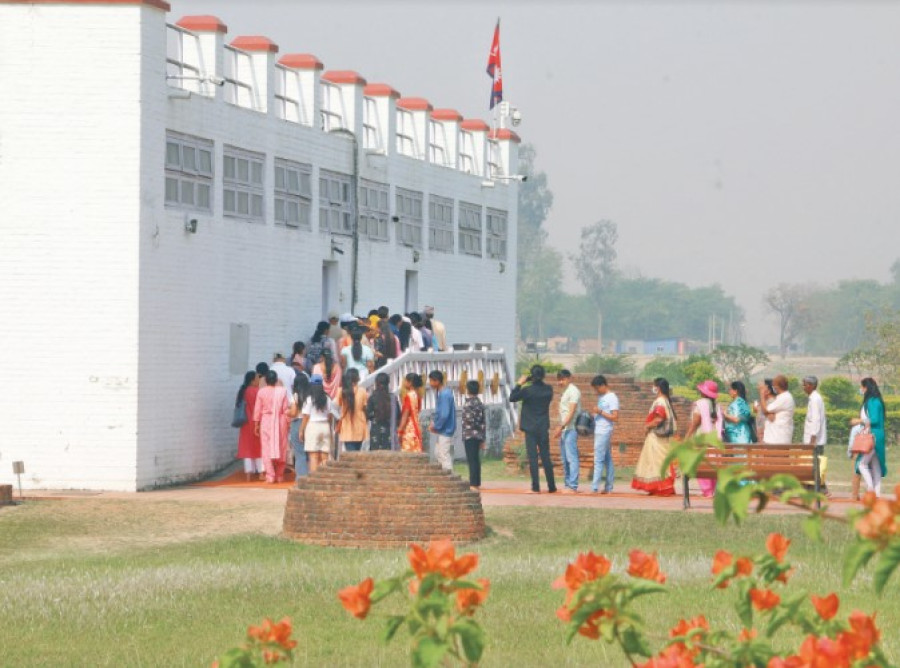Money
Indian visitors vital for tourism, but Nepal’s policies are not welcoming
Besides an IRs 25,000 cash limit, Indian tourists grapple with hassles in obtaining vehicle permits to come to Nepal.
Dipendra Baduwal
Nepal welcomed a record number of Indian tourists last year, bringing joy to a tourism industry stricken by an economic slowdown. More than 300,000 Indian tourists came to Nepal via air in 2023.
The number of Indians coming via surface routes is still larger—over a million, according to the Nepal Tourism Board. This has given a much-needed fillip to the country’s tourism industry and kept entrepreneurs busy.
Indians coming via surface routes are not recorded as tourists in the government database.
However, the overland Indian visitors’ survey conducted in 2017 showed that 1.20 million Indian tourists travelled to Nepal through the surface route.
The number may be even bigger now.
Despite the growth in the arrivals, Indian tourists are facing unnecessary troubles, right from the entrance, tourist entrepreneurs said.
Indian tourists are excited about visiting Nepal’s natural and religious heritages, but they return with many complaints, said Chandan Singh Kunwar, a tourism entrepreneur in Lumbini, the gateway to Buddha’s birthplace.
Their flow has increased in major tourist destinations like Pokhara, Chitwan, Kathmandu and Lumbini.
According to Kunwar, apart from the Belahiya border point, the key entry point, the inflow of Indian tourists has also increased through the Kalidaha-Kakarhawa border point, around 7-8 kilometres from Lumbini.
“The vehicles arriving from Kakrahawa are checked at five different places, approximately every 2 km,” said Kunwar. “The tourists would feel more at ease if the checking happened just at one point.”
According to Kunwar, after checks by the Nepal Police and Armed Police Force, Indian visitors have to put up with yet another check at the customs.
“It takes an hour and a half at the customs,” Kunwar said. “These are hassles.”
With the ongoing expansion and construction works on roads in Lumbini and nearby destinations, travel is not easy.
To visit Buddha’s birthplace Lumbini, Indian tourists arrive from border points like Rupandehi, West Nawalparasi and Kapilvastu. Nowadays, there are large Indian crowds at the Buddha’s birthplace. Many have come to celebrate the New Year. They stay in the Lumbini-area hotels and enjoy the ongoing street food festival.
Apart from Lumbini, the Indian tourists entering from the Jamunaha border point of Nepalgunj, Banke also face similar hassles, said Shreeram Sigdel, another tourist entrepreneur.
After getting customs clearance, the Indian vehicles need to visit another checkpoint to obtain a route permit, he said.
“Most Indian tourists come to Nepal in their private vehicles. Getting the route permits can be a problem,” he said.
Sigdel said the government should help build a tourist-friendly environment and help the Indian tourists reach their destination with relative ease.
“Stopping them at a dozen places in the name of this or that check is unnecessary.”
Nowadays, Thakurdwara, a tourist centre of Bardiya, has welcomed a huge number of Indian tourists who have come to celebrate the New Year, said Mohan Chaudhary, president of the Hotel Association of Nepal, Thakurdwara.
“We have been getting complaints from every tourist about the hassles they incur. The checks on the highways are frequent and tiresome, even after they have already completed all formalities at the customs point.”
Travel trade entrepreneurs say the security personnel's behaviour towards the Indian tourists is strange.
Sanjay Bajimaya, a tourism entrepreneur in Bhairahawa, said that currency is another hassle.
As the government allows Indian tourists to carry only up to IRs25,000 in cash, they cannot freely spend in Nepal.
He said several casinos on the Nepali side of the border target Indian visitors, but due to the restrictions on money, they are yet to see expected profits.
“Indian tourists come to Nepal to spend, so why impose such a limit?” he questioned.
The ban on IRs500 and IRs1,000 denomination Indian notes in Nepal is yet another problem, he said.
“Moreover, the border points from where international tourists come are unmanaged and unsafe,” said Bajimaya. “Our government’s tourism policies are rather restrictive I must say.”
Nepal plans to prosper as a tourist destination, but the country’s policies belie that intent, entrepreneurs say.
The highways are in a poor state and frequent police checks add frustration for the visitors, they said.
“We are lucky that the Indians continue to come despite the bad roads and unfriendly policies,” said Bajimaye.




 19.12°C Kathmandu
19.12°C Kathmandu















